The 44 day and 49 matches long World Cup 2015 played in Australian-New Zealand finally came to an end. Australia deservingly made a collage of trophies with all of them won on different continents, as the World Cup saw its own share of drama and entertainment. However the quadrennial event also had its share of shocks since the start of the inaugural match to mega finale. Here’s list of five most unexpected events of the World Cup.
#1 Brendon McCullums daredevilry
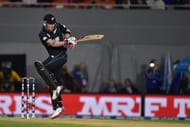
While “Slogga’s” attitude, aggression and dynamism during the event certainly helped the Kiwis romp to the finals, there was a shock element as to why McCullum was getting too aggressive too soon. It was fine till the group stages - entertaining and convincing – but it was expected that McCullum will let some of his “jump out of the crease” be reined in during the big games.
He scored a total of 328 runs at strike rate of 188 and those stats match very close to Glenn Maxwell’s – 324 runs at 182 strike rate. But here’s the difference. Brendon was opening the innings and lead of the team and average of 36 was not at par with his team requirements from him. Maxwell came lower in order and still averaged 64.
Brendon’s bravery resembled Sanath Jayasuriya of 96 or Mark Greatbatch of 92, but while the latter mentioned batsmen had the likes of Aravinda De Silva and Martin Crowe (respectively) to come in, New Zealand of 2015 needed more from McCullum. His semi-final onslaught (59 off 26 balls) was a big factor for that win, but him lasting just eight balls in the Quarters (vs Windies) and just three Starc deliveries in the final, wasn’t worth the risk.
Despite winning an important toss and batting first, McCullum’s early departure at MCG gave the hosts the first foot inside the door. Close to a billion fans worldwide backing the underdog and waiting to see a new champion were dumbfounded. It was common sense that Kiwi openers stay steady and negotiate the early Starc overs, but alas! There are limitations to positivity and the Kiwi skipper should have known that.
#2 Some big names failing
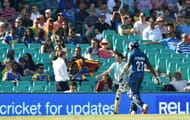
Despite the world cup being a high-scoring tournament with many batting records broken, some of the leading batsmen failed to turn up. Mahela Jayawardene averaged 25 in his swansong event, Ahmed Shehzad was Pakistan’s second highest run getter but with average of just 32 and Eoin Morgan’s paltry average of 18 was one of the reasons why the Poms had to return home early.
Even amongst the Aussies, Aaron Finch averaged unimpressive 35 while Shane Watson got runs only after demotion in his batting order, finishing the event with average of 41. Among the two losing semi-finalists, there were host of batsmen who were just one innings wonders. So Virat Kohli despite average of 50 didn’t score when it mattered the most, Rohit Sharma averaged 47, but with one notable innings, as was case with Ajinkya Rahane (35). South African openers, Amla averaged 41 and his fellow opener Quinton de Kock just a paltry 18.
The failure of some of the leading batsmen, on whom their nation’s hopes were built upon, was tough to digest. Especially in a tournament where many batsmen from the not so fancied countries averaged above 67 - Sean Williams (68) and Brendon Taylor (72) from Zimbabwe, William Porterfield (67) from Ireland and Mahmudullah (73) from Bangladesh.
#3 Drop-in pitches, boring matches
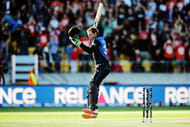
The batsmen making money was thanks to the drop in pitches and two new balls used. ICC are conscious of making their tournaments be played on good batting wickets, but after 38 centuries, seven scores in excess of 150 and two double centuries (all world cup records), there is danger of cricket being too one sided.
The two new balls significantly reduced potency of reverse swing specialists as well as finger spinners. Frequent rain breaks in key games also tilted the games in batsmen’s favour more often than not. Hence most games were over as a contest well within the 60 overs mark, out of the possible 100 overs. The chasing team, looking at gigantic scores would take risks too soon and lose way too soon. It was too much predictable pattern.
In group stages of WC 2011, India played a tie with England, a few days later they lost a thriller to South Africa in the 100th over. Each of India’s knockout games, four years ago, were alive till the 85th over at the least – with opposition having equal chance to win.
But in WC 2015, barring six games featuring South Africa, New Zealand, Bangladesh and England, all other games between the top eight nations was all but over by the 75th over of the match. Lack of thrillers, especially in the knockouts was a big damper. The expectation from an event hosted in Australia and New Zealand, was similar to 1992, the balance between bat and ball will be more even, but strangely that wasn’t the case.
Infact in WC 2015 the run rate was 1 run per over more than the next highest, WC2011, which is a significant jump.
#4 Associated fun
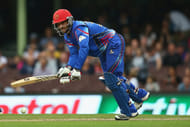
Ironically some of the best games of the tournament came from the associate nations – underlining the injustice meted out to them if 2019 World Cup is indeed going to go with 10 team format.
Ireland chased 304 successfully in the 97th over versus West Indies, beat UAE by two wickets chasing 278 in the 100th over of the match and then won a thriller on the 100th over versus Zimbabwe. Zimbabwe, in turn, beat UAE in a game which was decided in the 99th over, Afghanistan took apart Sri Lanka to 51/4 before losing in the 99th over and then created history when they beat Scotland in the last over of the match.
They not only won matches, but also won hearts by playing out thrillers which went the distance and gave the public full value for money. If ICC is serious about spreading cricket, the associates have to be part of it.
#5 Who has the best pace attack?
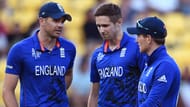
The expectation from a tournament in Australia and New Zealand was also that fast bowlers would step up and have a field day swinging, seaming and making batsman dance to their tunes. It did work for pacers from the co-hosts, but shockingly few of the fancied fast bowling attacks of the world flopped.
England were pipped to reach the semis on strength of their pace bowling which, not too long ago, kept them atop the test rankings. Yet James Anderson, Stuart Broad and Steven Finn together couldn’t match the number of wickets which Indian paceman Umesh Yadav alone got. Each of them have tournament economy on excess of 5.3 runs per over and were disappointing to say the least.
There could be a similarity here but the fast bowlers from Ireland and Scotland (all from United Kingdom) struggled during the event while Zimbabwean pacers (Chatara) and Afghanistan pacers (Zadran, Hassan) put up much better show.
Much better show was also expected from South Africa. Far from leading their attack, Dale Steyn’s economy of 5.02, was highest amongst four Proteas pace bowlers. Combined they picked up 41 wickets (Morkel - 17, Steyn - 11, Abbot - 9 and Philander - 4) when the three unfancied Indian pacers, Yadav - 18, Shami - 17 and Mohit - 13 in total picked 48 wickets.
Indian pacers delivering throughout the tournament came as a pleasant surprise to all fans globally. Each of the pacers had tournament economy of less than 5.0 and barring one game versus Bangladesh, always managed to pick an early wicket within the first ten overs.
Brand-new app in a brand-new avatar! Download Cric Rocket for fast cricket scores, rocket flicks, super notifications and much more!
